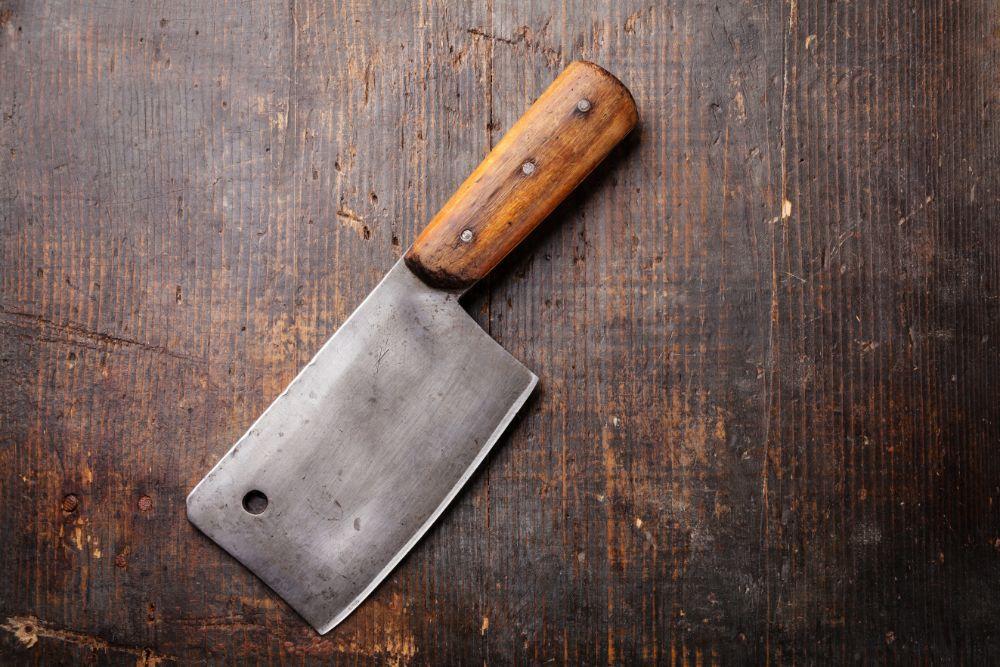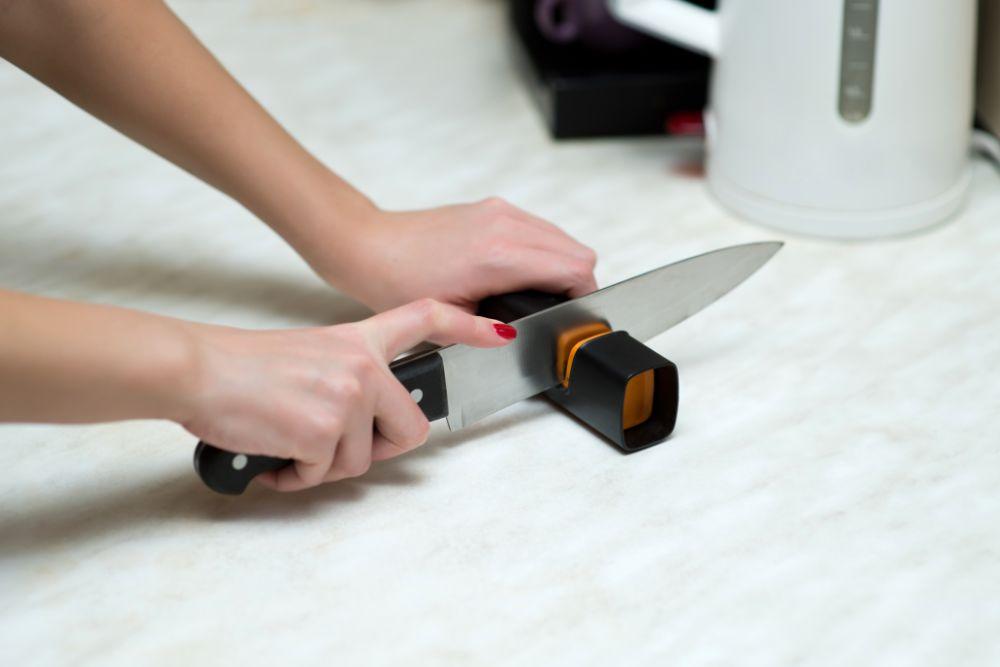There are many steps to cooking meat like a professional. You can start by selecting a quality cut, carefully preparing it for heat, and finishing things with just the right amount of cooking time.
Some people overlook the preparation step. Butchers take care of most of the heavy lifting, but sometimes you need to take things into your own hands. When that’s the case, you typically ask, “what knife should I use to cut bones?”
Bones can range from thick ones found in cows and pigs, medium-sized ones found in poultry, and small bones found in fish. The larger bones are the most difficult to cut, while some fish bones are so small you might accidentally swallow them.
This post covers everything you need to know to answer the question, “what knife should I use to cut bones?” We’ll review the most common styles of knives used to cut bones, what works best for each purpose, and a few words of caution at the end - at which point you'll find the best knife for the job.
Some people think a knife is a knife. They might have one or two in their kitchen and use them to take care of every function. While this works for some people, it’s often not the best approach.
You don’t have to purchase an entire Japanese knife collection, but carefully selecting a small lineup of knives and properly caring for them can help you prepare your food more efficiently and safely. When cutting bone, it is critical to use the most appropriate kitchen knife and technique.
Bones are tough and challenging to cut through. If a knife isn’t made for cutting bone, it might slip off the bone and fail to cut where you want it. That’s why people who regularly need to cut large bones keep specific knives on hand for that purpose.
Some butchers skip the knife altogether when cutting thick bones. Instead, they’ll reach for a bone saw or powered bandsaw to take care of the job.
Using a saw is a great way to get through a lot of thick bones quickly, all without cracking or splitting the bones. But most people don’t need a kitchen bone saw as they don't cut through thick bones often.
Instead, most people turn to one of three knives for cutting bone at home:
Meat cleaver: The most effective knife for cutting bone, designed to be heavy and sharp for maximum force.
Butcher knife: Incredibly versatile and can cut through most small and medium-sized bones.
Chef knife: Good all-purpose knife that can serve to separate joints or cut small bones.
Let's dive into each of these different knife types to see how they perform when cutting bones.
 Some Knives Can Do a Better Job Cutting Bones Than Others
Some Knives Can Do a Better Job Cutting Bones Than Others
A meat cleaver is one of the largest and heaviest knives you can find in kitchens. Their thick blade makes them heavy, providing a lot of force to cut through tough objects. So when asking, “what knife should I use to cut bones?” If possible, get a meat cleaver. It is undoubtedly the best knife you can use when you need to cut through bones.
Meat cleavers have a wide spine (the spine is the top, blunt edge opposite from the cutting edge of the knife). You can add pressure by pressing the spine while cutting, allowing additional force to get through the bones.
Some companies make meat cleavers with long, wooden handles. These are often called pig splitter or hog splitter knives. They combine the meat cleaver design with the long handle of a sledgehammer for increased leverage and power.
Meat cleavers are also a good choice for cutting meat. Their thick, sharp blades can be excellent for cutting flesh, tendons, and bone.
If a meat cleaver sounds overkill, a good butcher’s knife will probably be a good bet. Butcher knives are one of the most versatile kitchen blades. They have a thick stable blade with a sharp edge for cutting. Plus, you can use the tip for puncturing.
If you only have small to medium-sized bones, a butcher knife works well. It can cut through most with ease.
Butcher knives can also easily cut through other connective tissues, such as skin, tendons, and cartilage. This helps separate cuts of meat with large bones, as you can usually get through the joint to divide without cutting the bone.
If a butcher knife fails to provide enough force to cut the bone, don’t force it. Doing so can be dangerous, causing the knife to slip off the bone and potentially cut something else.
Step up to a meat cleaver or even a bone saw instead.
People that work with thick cuts of meat and need to cut bones often might be better off purchasing a meat cleaver or butcher’s knife.
But for most household purposes, the classic chef knife, sometimes known as a kitchen knife, should perform adequately.
Chef’s knives have a more tapered design, offering a long, sharp edge with a decently blunt spine for a bit of additional pressure. High-quality chef knives can cut through most cuts of meat, medium to small bones, and any connective tissue.
Once again, it’s crucial to understand the limits of a chef knife. It isn't the best knife that you can use for cutting bone. If it doesn’t cut what you want it to without applying excessive force, don't force it.

Butchers Knives Can Easily Cut Through Bone
You probably noticed that the answer to “what knife should I use to cut bones?” is full of larger knives with a long blade designed to use force.
On the other end of the knife spectrum, many smaller knives exist. These are not suitable for cutting any large bones. Let’s go over a few of these to see what they’re best for.
You might be tempted to use a boning knife to cut bone. After all, bone is in the name. But believe it or not, a boning knife is not to cut bones.
A boning knife is one of the varieties of filleting knives. They can be used to cut the meat off the bone, separating the parts you want to cook as flesh from the bone you may discard or cook in another way. Filleting knives typically feature a flexible blade which allows you to more easily navigate the bone structure when filleting fish or working your way around meat bones. Don't use a fillet knife for cutting thick bones.
A carving knife can look quite similar to a chef knife. But they're not the same. Thinner than a chefs knife, the carving knife blade is designed to carve meat, similar to fillet knives, rather than chop with force.
A bread knife is a serrated knife that might on first glance look like a good fit for cutting bone due to its serrated edge. But the large serrations that work well for cutting bread without crushing it are not appropriate for cutting bone. Attempting to cut bone with a bread knife will be unsuccessful and may damage your knife. Bone saws use much smaller serrations to cut through bone.
One other common type of knife you might have in your household is a paring knife. These smaller knives are used for more precise purposes, such as peeling fruits or vegetables. Paring knives - including the bird's beak knife with its curved blade - aren't the right knife to use when you need to cut bone.
A ceramic knife is also a poor choice for cutting bone. Ceramic knives are able to cut cleanly through soft fruits and vegetables. Unfortunately, they are quite brittle when compared to steel knives and are prone to breaking.
And to ensure we exclude this, a utility knife is not appropriate for cutting bones. This term usually refers to a knife with a small retractable blade used for cutting cardboard, thin plastic, or small pieces of wood. A utility knife is more common on construction sites than in the kitchen.

Make Sure You Are Using a Sharp Knife When Cutting Bone
A proper technique is key to getting the most out of any knife. You always want to stay in control, especially in the kitchen around potentially slick surfaces.
It might be tempting to use a swinging motion to cut through bones, similar to how you use an ax. This is a good method in some rare cases, especially when using a long-handled meat cleaver or pig splitter. But for most knives, this motion lacks the control needed to make a precise cut.
Use a pinch grip to cut through meat and bone if you want the most precise cut. By placing the knife handle in your palm and reaching your pointer finger and thumb to the blade's heel, you can pinch the knife to cut through objects.
A pinch grip is one of the most versatile ways to cut things up and is recommended to learn. But it can sometimes lack the pressure and force needed to cut through large bones.
The final method you should be aware of to cut bone is known as batoning. If a pinch grip doesn't provide enough force, but you don't want to go for the full swing, batoning can be a good middle ground.
Batoning hammers the knife through. Place the sharp cutting edge of the knife on the bone where you want to cut it, then use a mallet or your palm to push against the blade spine to cut through the bone or thick meat.
